Related Research Articles
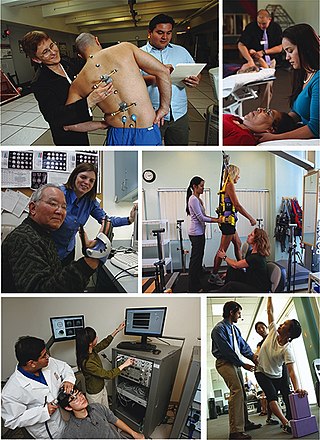
Kinesiology is the scientific study of human body movement. Kinesiology addresses physiological, anatomical, biomechanical, pathological, neuropsychological principles and mechanisms of movement. Applications of kinesiology to human health include biomechanics and orthopedics; strength and conditioning; sport psychology; motor control; skill acquisition and motor learning; methods of rehabilitation, such as physical and occupational therapy; and sport and exercise physiology. Studies of human and animal motion include measures from motion tracking systems, electrophysiology of muscle and brain activity, various methods for monitoring physiological function, and other behavioral and cognitive research techniques.
World Abilitysport is an international sports organisation that governs sports for athletes with physical impairments.
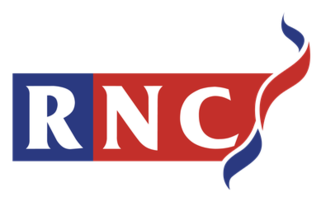
The Royal National College for the Blind (RNC) is a co-educational specialist residential college of further education based in the English city of Hereford. Students who attend the college are aged 16 to 25 and blind or partially sighted. They can study a wide range of qualifications at RNC, from academic subjects such as English and Mathematics to more vocational topics such as Massage and Complementary Therapies. Alongside regular further education subjects and vocational training, the college offers training in mobility, assistive technology, Braille, independent living skills and personal development.
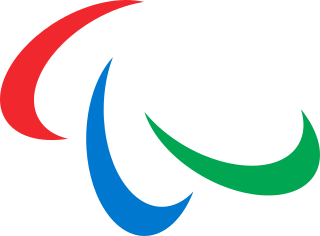
The Paralympic sports comprise all the sports contested in the Summer and Winter Paralympic Games. As of 2020, the Summer Paralympics included 22 sports and 539 medal events, and the Winter Paralympics include 5 sports and disciplines and about 80 events. The number and kinds of events may change from one Paralympic Games to another.
Therfield School is a coeducational secondary school and sixth form located in Leatherhead, Surrey, England. Therfield School sixth form teaches courses of further education for students between the ages of 16 and 18 and has an arrangement of reciprocated entry criteria with three others in the county: The Ashcombe School, Warlingham School and Oxted School.
Mary Rose Academy is a 2-19 special school with academy status, located in Portsmouth, Hampshire, England. It opened in February 2007 and educates 110 pupils. The opening of Mary Rose School, due for September 2006, was delayed by design and construction issues. The school takes children with a wide range of severe and complex learning needs. Mary Rose School was awarded specialist Sports College status in 2008 and converted to academy status in November 2013. The school was then renamed Mary Rose Academy.
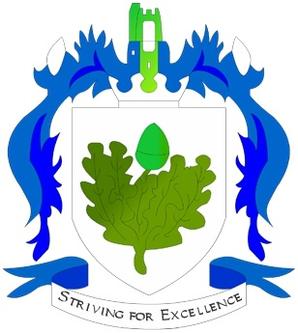
Woodchurch High School is a non-selective co-educational secondary school with academy status for 11- to 16-year-olds. It is located at Woodchurch, on the Wirral Peninsula, England. The school holds Specialist Engineering College status, and has facilities for students with physical and learning disabilities.
Swavesey Village College is a village college and academy school in the village of Swavesey in south Cambridgeshire, England. In 2011, Swavesey Village College became an Academy and established the Cambridge Meridian Academies Trust.
Treloar School and College is a non-maintained residential and day special school and college for disabled children and young people, aged from 2 to 25 in Holybourne near Alton, Hampshire, UK.

The National Star College is an independent specialist further education college for people with physical disabilities, acquired brain injuries and associated learning difficulties. It is based at Ullenwood Manor in the village of Ullenwood, near the spa town of Cheltenham, Gloucestershire.
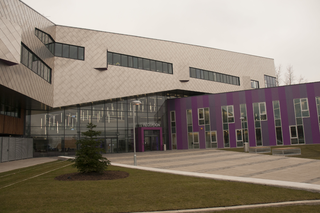
The Academy of St Nicholas, previously known as Enterprise South Liverpool Academy (ESLA), is a joint Roman Catholic and Church of England secondary school located in Garston, Liverpool, England. The school is co-educational from years 7 to 11 including the sixth form, All Saints Sixth Form College, for ages 16–19.
Disability sports classification is a system that allows for fair competition between people with different types of disabilities.
Les Autres sport classification is system used in disability sport for people with locomotor disabilities not included in other classification systems for people with physical disabilities. The purpose of this system is to facilitate fair competition between people with different types of disabilities, and to give credibility to disability sports. It was designed and managed by International Sports Organization for the Disabled (ISOD) until the 2005 merger with IWAS, when management switched to that organization. Classification is handled on the national level by relevant sport organizations.
LA1 is a Les Autres sport classification is an wheelchair sport classification for a sportsperson with a disability that impacts their locomotor function. People in this class have severe locomotor issues with all four limbs as a result of loss of muscle strength or spasticity. This also impacts their dominant throwing arm. They also have poor sitting balance.
LA2 is a Les Autres sport classification is an wheelchair sport classification for a sportsperson with a disability that impacts their locomotor function. People in this class have severe locomotor issues with all four limbs as a result of loss of muscle strength or spasticity to a lesser degree than LAF1 or have severe locomotor issues in three of their limbs. They have moderate sitting balance, but good sitting balance while throwing.
LA3 is a Les Autres sport classification is a wheelchair sport classification for a sportsperson with a disability that impacts their locomotor function. People in this class have normal trunk function, good sitting balance, and functional upper limbs. They have limited use of their lower limbs.
LA4 is a Les Autres sport classification is an ambulatory sport classification for a sportsperson with a disability that impacts their locomotor function. People in this class may or may not uses crutches and/or braces on a daily basis. They have some issues with balance and reduced function in their upper limbs.
LA6 is a Les Autres sport classification is an ambulatory sport classification for a sportsperson with a disability that impacts their locomotor function. People in this class have a minimal locomotor disability that tends to impact one of their upper limbs or knees. The class includes people with arthritis and osteoporosis, or ankylosis of the knee.
SS2 is a Les Autres sport classification ambulatory class for people with short stature. Eligible males have a standing height and arm length that added together are equal to or less than 200 centimetres (79 in). Eligible female have a standing height and arm length that added together are equal to or less than 190 centimetres (75 in). Internationally, governance for this sport is handled by IWAS, following the 2005 merger of ISMWSF and ISOD. Classification is handled nationally by relevant national organizations. People in this class can participate in a number of sports including athletics, swimming, and para-equestrian.
SS1 is a Les Autres sport classification is an ambulatory class for people with short stature. Eligible males have a standing height and arm length that added together are equal to or less than 180 centimetres (71 in). Eligible female have a standing height and arm length that added together are equal to or less than 173 centimetres (68 in).
References
- ↑ "Home - Greenbank Disability Charity" . Retrieved 2024-03-23.
- ↑ Turner, Ben (2012-07-13). "Former Paralympian and chief executive of city charity Greenbank, Gerry Kinsella receives John Moores fellowship". Liverpool Echo. Retrieved 2024-03-23.
- 1 2 Conn, David (2012-12-18). "Merseyside's magic place - how Greenbank is doing it for the kids". The Guardian. ISSN 0261-3077 . Retrieved 2024-03-23.
- ↑ "BBC Local Live: North West of England". BBC News. 2018-03-05. Retrieved 2024-03-23.
- ↑ LiverpoolEcho, M. S. P. (2015-01-17). "Greenbank Sports Academy delighted to secure the continued support of St James's Place Foundation". Liverpool Echo. Retrieved 2024-03-23.
- ↑ "Olympic training venues - North West". 2008-03-03. Retrieved 2024-03-23.
- ↑ Young-Powell, Abby (2013-01-15). "Five minutes with ... Gerry Kinsella". The Guardian. ISSN 0261-3077 . Retrieved 2024-03-23.
- ↑ Rigg, Danny (2022-08-13). "Man who woke up paralysed wins gold at Commonwealth Games". Liverpool Echo. Retrieved 2024-03-23.
- ↑ "Children with special educational needs and disabilities (SEND)". GOV.UK. Retrieved 2024-03-23.
- 1 2 "Further education and skills inspection report". Ofsted.
- ↑ "Students celebrate year of success at Greenbank College". Liverpool Echo. 2013-07-23. Retrieved 2024-03-23.
- ↑ "South Liverpool students host hair-raising show". Liverpool Echo. 2013-07-30. Retrieved 2024-03-23.
- ↑ "Students are top of the crops". Liverpool Echo. 2015-07-08. Retrieved 2024-03-23.